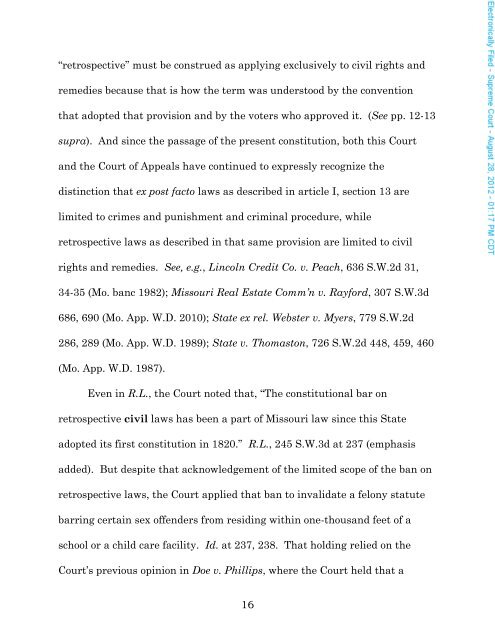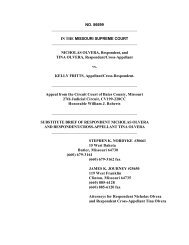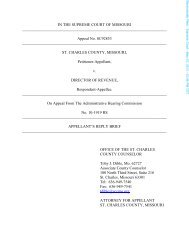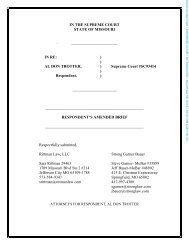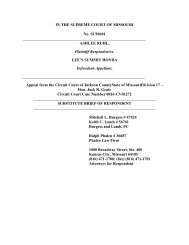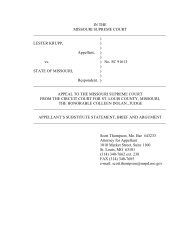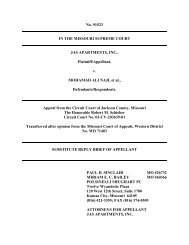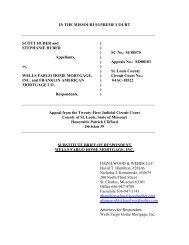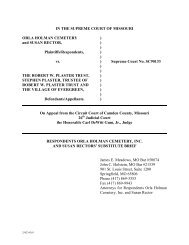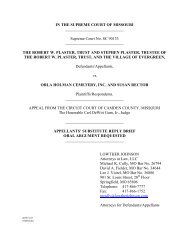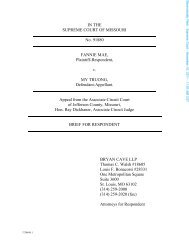In the Supreme Court of Missouri
In the Supreme Court of Missouri
In the Supreme Court of Missouri
Create successful ePaper yourself
Turn your PDF publications into a flip-book with our unique Google optimized e-Paper software.
“retrospective” must be construed as applying exclusively to civil rights and<br />
remedies because that is how <strong>the</strong> term was understood by <strong>the</strong> convention<br />
that adopted that provision and by <strong>the</strong> voters who approved it. (See pp. 12-13<br />
supra). And since <strong>the</strong> passage <strong>of</strong> <strong>the</strong> present constitution, both this <strong>Court</strong><br />
and <strong>the</strong> <strong>Court</strong> <strong>of</strong> Appeals have continued to expressly recognize <strong>the</strong><br />
distinction that ex post facto laws as described in article I, section 13 are<br />
limited to crimes and punishment and criminal procedure, while<br />
retrospective laws as described in that same provision are limited to civil<br />
rights and remedies. See, e.g., Lincoln Credit Co. v. Peach, 636 S.W.2d 31,<br />
34-35 (Mo. banc 1982); <strong>Missouri</strong> Real Estate Comm’n v. Rayford, 307 S.W.3d<br />
686, 690 (Mo. App. W.D. 2010); State ex rel. Webster v. Myers, 779 S.W.2d<br />
286, 289 (Mo. App. W.D. 1989); State v. Thomaston, 726 S.W.2d 448, 459, 460<br />
(Mo. App. W.D. 1987).<br />
Even in R.L., <strong>the</strong> <strong>Court</strong> noted that, “The constitutional bar on<br />
retrospective civil laws has been a part <strong>of</strong> <strong>Missouri</strong> law since this State<br />
adopted its first constitution in 1820.” R.L., 245 S.W.3d at 237 (emphasis<br />
added). But despite that acknowledgement <strong>of</strong> <strong>the</strong> limited scope <strong>of</strong> <strong>the</strong> ban on<br />
retrospective laws, <strong>the</strong> <strong>Court</strong> applied that ban to invalidate a felony statute<br />
barring certain sex <strong>of</strong>fenders from residing within one-thousand feet <strong>of</strong> a<br />
school or a child care facility. Id. at 237, 238. That holding relied on <strong>the</strong><br />
<strong>Court</strong>‟s previous opinion in Doe v. Phillips, where <strong>the</strong> <strong>Court</strong> held that a<br />
16


